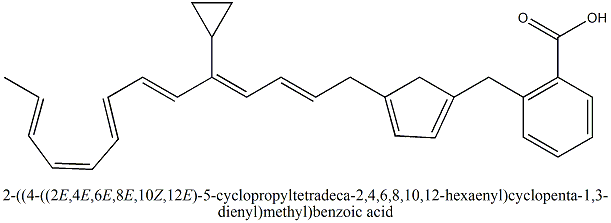Organic Chemistry/Introduction to reactions/How to write organic reactions
Organic chemistry > How to write organic reactions
<< Introduction to reactions | Overview of reactions >>
Writing General Chemistry Reactions
[edit | edit source]In organic chemistry, a reaction may be written precisely as it is for general chemistry if only a basic amount of information is needed. For example, when a haloalkane is turned into an alkene, the reaction may be written:
CH3CH2CH2Br + H2SO4 + H2O --> CH3CHCH2 + HBr + H2SO4 + H2O
Unfortunately, this method of notation does not tell anyone very much about the reaction, and it takes expertise to know exactly what is going on. A new student to organic chemistry probably would not notice that the product molecule contains one site of unsaturation due to a double bond between carbon atoms number one and number two. Because it is so general, this notation is good for general chemistry, but organic chemistry requires more precision.
For most students, common practices in writing organic reactions will be different than used in general chemistry.
Differences in Organic Chemistry Notation
[edit | edit source]Organic chemistry reactions are often not written as balanced equations. This is because many organic chemists - who are just as lazy as anyone else - tend to be more interested in the organic product of a reaction than in anything else going on in the reaction. Side products are often ignored, and just as often catalysts and solution notation may be highly abbreviated or left out altogether. As you gain familiarity with organic chemistry you will come to understand just what may be abbreviated or left out, but in the beginning this can be a source of frustration.
Another difference is that modified Lewis drawings of molecules are often used instead of molecular formulas. This makes sense due to the fact that organic molecules are often rather large in size and complicated in structure, so that they can be more easily understood in the form of a drawing as opposed to a word-formula. A two-dimensional drawing reveals some of the three-dimensional shape of the molecule, but when necessary even three-dimensional drawings are used to depict reactants and products.

Working with the above drawing of a molecule may be difficult, but it is still far easier than using its name, or attempting to guess at the structure and functionality of a molecule using just its chemical formula of C29H31COOH.
Examples of Organic Chemistry Notation
[edit | edit source]Typically organic chemistry molecules are drawn as modified Lewis structures. If you remember, a Lewis structure uses lines to connect chemical symbols together, illustrating a covalent bond, and also uses dots to represent non-bond electrons. This is shown in the diagram below of carbon dioxide. The drawing illustrates the four electrons of carbon participating in two double bonds with two oxygen atoms, and also the non-bonding electron pairs for each atom of oxygen.
In organic chemistry, there are a lot of carbons in every molecule, generally, so organic chemists by convention do not draw every single carbon in every molecule. The same is true of hydrogens attached to the carbons; it is twice the annoyance to draw thirty hydrogens in a fatty acid than it is to draw the fifteen carbons. Therefore, in organic chemistry, carbon atoms are assumed to be wherever a line or line segment begins or ends. Furthermore, enough hydrogen atoms are assumed to be attached to any carbon not marked with a + or - sign (indicating an ionic charge) to bring that carbon's total number of bonds to four. At first this notation may be confusing, but the shorthand method rapidly proves its worth.
<< Alkanes | << Introduction to reactions | How to write organic reactions | Overview of reactions >> | Introduction to functional groups >>








